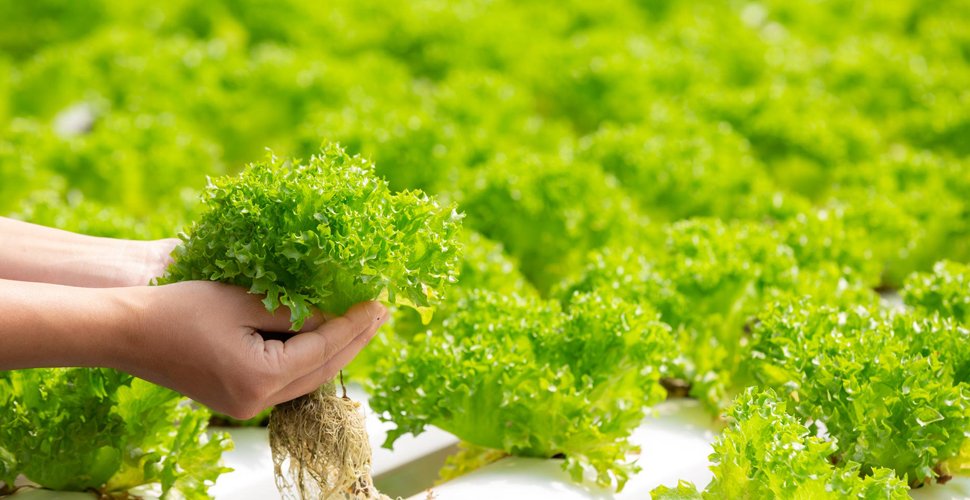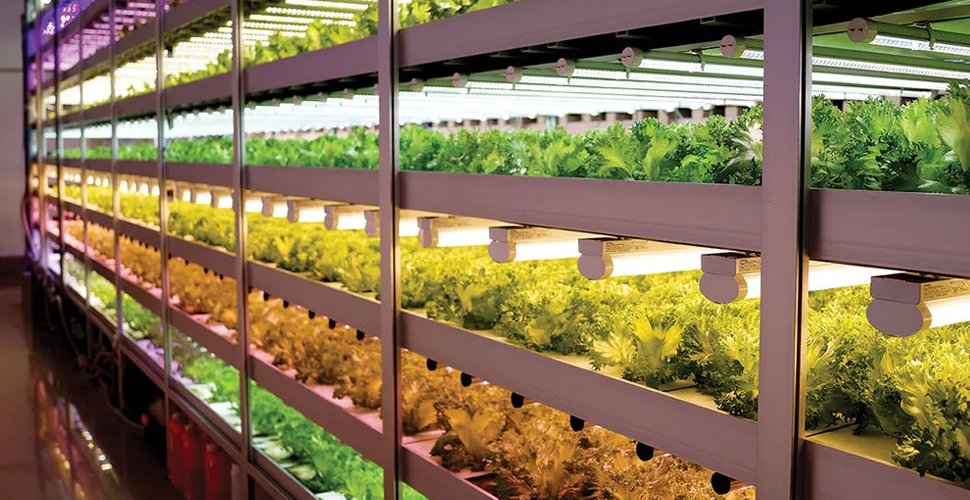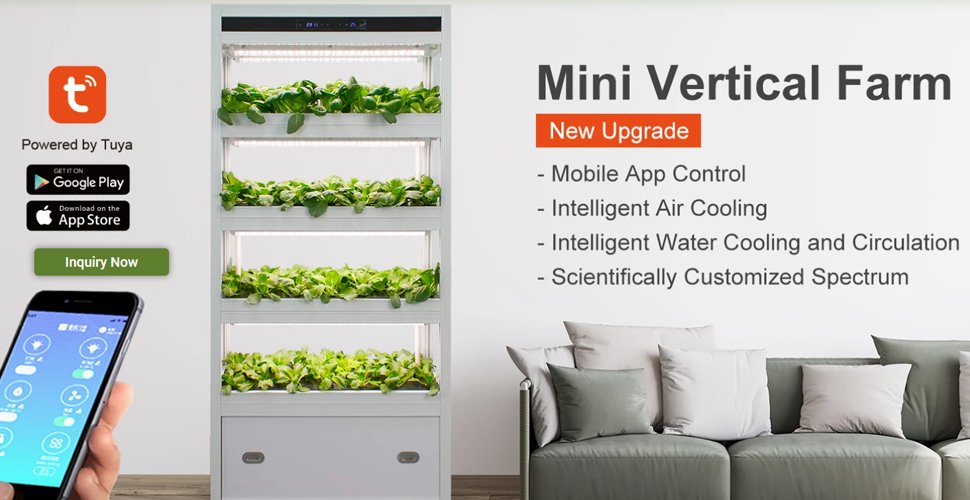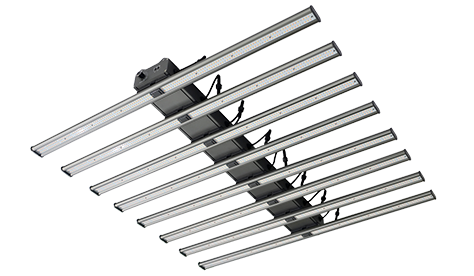Over the past few years, an increasing number of schools have established hydroponics labs to introduce students to the exciting world of hydroponics science and encourage innovative thinking.
These labs feature cutting-edge hydroponic equipment and unique cultivation methods, making them a crucial component of STEM education.
Students can study the effects of environmental factors like light, temperature, and humidity on plant growth using advanced laboratory hydroponics equipment for environmental control and automation. This can spark their interest in engineering and practical operations while developing their hands-on skills and design thinking.
In this article, we will offer you suggestions for conducting research using hydroponic laboratories. We will also help you deepen your understanding of the relevant aspects and guide you in finding the appropriate hydroponic equipment for your laboratory.
If you haven’t started your research project yet, we recommend learning about the technical benefits of hydroponic growing systems.
Technical Advantages of Hydroponic Growing Systems
Modern agriculture has embraced hydroponic growing systems as a new production model.
These systems utilize nutrient solution supply and soilless cultivation, eliminating the traditional dependency on the soil environment. This approach results in efficient resource utilization and green production.
There are several significant technical advantages to using hydroponic cultivation systems, which include:
- Soilless cultivation is an environmentally friendly production method that eliminates the risks of pathogens and soil pollution.
- It allows for precise control over the nutrient solutions, ensuring the plants receive the exact nutrients they need to grow optimally.
- The plant’s growth environment, including light, temperature, humidity, and CO2 levels, can be fully regulated to achieve high yields and produce high-quality products.
- Planting in vertical space allows for a high density of plants in a small area, saving space and allowing for easy expansion.
- Recycling the nutrient solution reduces resource consumption, lowers production costs, and is environmentally friendly.
- The automatic control system reduces the need for manual management and increases production efficiency.
- The modular design allows for easy mobility and expansion to meet the production needs of various scales.
To summarize, hydroponic cultivation systems are becoming an important aspect of modern agricultural production due to their environmentally-friendly and resource-efficient nature, as well as their high level of environmental control and automation.
Their widespread use can greatly enhance traditional agricultural practices and promote the growth of modern agriculture.

Vertical Hydroponic Growing System on Campus
In recent years, vertical hydroponics has been widely used in teaching and research in universities and research institutions in various countries.
It has become an important platform for cultivating students’ innovative spirit and practical ability and also reserves talents for industrial development.
The Green Vertical Farm at the University of Connecticut, the Future Food Institute at Macquarie University, the Hydroponics Lab at Chiba University, the Future Food Institute at the University of Auckland, New Zealand, are just a few examples of campuses to follow.
The application of a vertical hydroponics system on campus not only improves the level of research and talent training in facility agriculture but also provides a more in-depth understanding of modern agricultural development.
Let’s expand on the hydroponics lab at Chiba University in Japan.
Under the leadership of Professor Luna, the hydroponics lab at Chiba University is actively driving the expansion of the plant factory industry by introducing new species through a cost-effective and user-friendly method.
Furthermore, they are relentlessly exploring cutting-edge techniques to ensure cost-effective production.
The four key plants for the research are perilla leaves, and cilantro, and golden lotus. This research aims to explore new crops that can potentially be used for food. It is worth noting that golden lotus, one of the crops being studied, is also highly nutritious.
It is challenging to cultivate seedlings of golden lotus due to a lengthy germination period of 3-4 weeks, and the seeds often experience uneven germination, which is not ideal for plant factories.
As a solution, they experimented with cuttings and successfully achieved uniform seedlings within 2 weeks using the nutrient solution. The cost of using cuttings was also relatively low compared to seeds.
To further study the impact of different EC values in nutrient solutions on plant growth, students tested the golden lotus in five different nutrient solutions with varying EC values.
It is crucial to note that the Auxgrow SG40T vertical system series possesses 4 implant layers that enable the concurrent execution of multiple research groups.

How is A Hydroponics Garden A STEM Project?
Hydroponic plant factories are the subject of agricultural research, with a focus on various themes such as nutrition and environmental control, plant physiology and biochemistry, facilities, and equipment, pest and disease control, operation and management, and the selection and breeding of new varieties.
We have compiled a list of references that can be used to explore the usage of vertical hydroponic grow system in studying plant life.
LED Lighting Conditions Affect Plant Growth and Quality
The research contents available can be used for a comprehensive evaluation of plant factory technology. This includes the use of hydroponic laboratory equipment and theoretical and technical support to optimize efficiency.
- The effect of LED light wavelength on plant growth.
Select different light wavelengths (red light, blue light, white light, etc.) to study their effects on plant growth, growth period, and yield. Obtain the most suitable light wavelength.
- The effect of LED light intensity on plant growth.
Set different light intensities to study their effects on leaf area, photosynthetic rate, dry matter accumulation, and yield of plants. Determine the most suitable light intensity.
- The effect of LED light treatment on plant quality.
Study the changes in nutritional components (sugar content, vitamin C content, etc.), flavor substances (aroma components) and functional components (polyphenols, etc.) of plant products under different LED light conditions. Determine the best light conditions.
- The effect of LED light treatment on plant physiological characteristics.
Study the effects of light conditions on plant photosynthesis, respiration, antioxidant enzyme activity, plant hormone levels and other physiological characteristics. Expound its regulatory mechanism on plant growth and development.
- The different effects of different diodes on plant growth.
Select different types of diodes (red light diodes, blue light diodes, and white light diodes, etc.) to study their effects on plant growth, quality, and physiological characteristics.
- Plant energy consumption pattern under the LED light.
Study the light requirements of plants at the early growth stage, middle growth stage and fruiting stage under LED light. Determine the optimal daily light duration and intensity at each growth stage to achieve high yield and low energy consumption cultivation mode.
- Cost-benefit analysis of LED light.
Analyze and compare the cultivation cost and output value of different LED light treatments to determine the most cost-effective LED light scheme.
Improving Hydroponic Nutrient Solutions and Plant Absorption
To research the effects of different nutrient elements and their concentrations on plant growth and seek the ideal nutrient solution formulation. We also study the absorption and utilization pattern of various nutrient elements by plants to improve the utilization rate of resources.
- The influence of nutrient type and proportion on plant growth.
Study the effects of the type and content ratio of major, minor, and trace nutrients in the nutrient solution on plant growth and growth period. Optimize the nutrient composition in the nutrient solution.
- The influence of carrier type on plant absorption.
Select different types of carriers (limestone, vermiculite, pumice, etc.) to study their effects on plant absorption and transport of significant nutrients. Choose the most suitable carrier type.
- The influence of pH on plant absorption.
Set different nutrient solution pH values to study their effects on plant absorption and utilization of various nutrients. Determine the most suitable pH range.
- The influence of EC value on plant growth.
Set different nutrient solution conductivity (EC) to study its effects on plant growth, yield and quality. Obtain the most suitable EC control range.
- The influence of nutrient concentration on plant growth.
Set different nutrient solution concentration gradients to study their effects on plant leaf area, photosynthetic rate, dry matter accumulation and yield. Determine the optimum nutrient solution concentration.
- The influence of organics in nutrient solution on plant growth.
Add different types of organics (sugar, amino acids, etc.) to study their effects on plant growth, development and product quality. Select the best organic fertilizer addition scheme.
- The influence of nutrient solution recirculation on plant growth.
Set the different number of nutrient solution recirculation times to study its effects on plant growth, yield, and quality. Determine the best nutrient solution recirculation strategy.
- The influence of nutrient solution fertilization scheme on plant growth and absorption.
Set up different nutrient solution input amounts and periods to study their effects on plant growth period and the absorption dynamics of different nutrients.

Environmental Control and Optimization of Plant Factories
In the plant factory, we can analyze how environmental factors like temperature, humidity, pH, and CO2 concentration impact plant growth.
By doing so, we can identify the optimal control range and optimization plan for each of these factors.
- The influence of temperature on plant growth.
Set different temperature conditions to study their effects on plant growth, growth period, yield and quality. Determine the most suitable temperature control strategy.
- The influence of relative humidity on plant growth.
Set different relative humidity to study their effects on plant growth, stomatal conductance, photosynthesis and product quality. Obtain the most suitable humidity control range.
- The influence of carbon dioxide concentration on plant growth.
Set different carbon dioxide concentrations to study their effects on plant growth, photosynthesis and dry matter accumulation. Determine the most suitable CO2 concentration.
- The influence of ventilation conditions on plant growth.
Set different ventilation rates and cycles to study their effects on temperature and humidity in the greenhouse, plant growth and pest occurrence. Determine the optimal ventilation control strategy.
- The effect of light day period regulation on plant development.
Treat plants with different light periods to study their effects on the plant growth process, growth and yield. Obtain the most suitable light day period scheme.
- The interaction mechanism of environmental factors.
Study the mutual influence mechanism of temperature, humidity, light, CO2 and other environmental factors. Analyze their synergistic effect on restricting plant growth. Provide a theoretical basis for optimizing the plant factory environment.
- Intelligent control technology for the plant factory environment.
Develop automatic monitoring technology and equipment for various environmental factors. Establish a dynamic control model of environmental factors. Realize intelligent automatic control of temperature, humidity, ventilation, CO2 and other environmental factors.
Plant Growth Factors and Physiological Regulation
The purpose of this study is to examine how different plant growth factors, including gibberellin, abscisic acid, and resistin, impact the different stages of plant growth.
The goal is to better understand the physiological mechanisms that regulate plant growth and development, with the ultimate aim of being able to control it.
- The influence of different plant hormones on the plant germination stage.
Treat seeds or seedling substrates with different types and concentrations of plant hormones. Study their effects on seed germination rate, seedling growth and physiological indicators. Determine the most suitable type and an additional amount of plant hormones.
- The influence of plant hormones on plant seedling growth.
Treat seedlings with different plant hormones during seedling propagation. Study their effects on seedling growth, root development and photosynthetic characteristics. Determine the best plant hormone addition strategy.
- The influence of different plant hormones on plant growth and development.
Spray or irrigate plants with different plant hormones at each developmental stage of plant growth. Study their effects on plant morphology, physiological characteristics and yield. Clarify the regulatory role of plant hormones in growth and development.
- The interaction between plant hormones and other environmental factors.
Study the interaction mechanism between plant hormones and environmental factors such as light, temperature, humidity and nutrients. Analyze their synergistic effect on plant growth. Provide theoretical and technical support for crop cultivation.
- The role of plant hormones in plant stress resistance.
Study the effects of plant hormones on plant drought resistance, cold tolerance, salt tolerance and other stress resistance. Explain their regulatory mechanism in plant stress resistance. Provide a theoretical basis for improving yield and quality.
- The regulatory role of plant hormones in plant reproduction.
Study the effects of different plant hormones on plant flowering, fruit set, and maturity. Clarify their regulatory mechanism at each stage of plant flowering and fruit set. Provide technical means to improve yield and optimize quality.
- Application of plant hormones in integrated control technology.
Study the combined application of plant hormones and other control technologies such as genetic engineering and environmental control. Establish a more precise and efficient integrated control technology strategy. Realize sustainable high-yield and high-quality crop production.

Pest Control and Integrated Technology
This research focuses on understanding the patterns of occurrence and methods of controlling common pests and diseases in plants.
Its aim is to develop effective techniques that leave minimal residue. For instance, we are studying ways to control powdery mildew, epidemic mildew, and honeydew disease.
- Research and development of pest and disease monitoring technology.
Develop automated technology for pest and disease identification and monitoring. Establish an efficient prediction and early warning model for pests and diseases. Provide technical means for scientific pesticide application and control.
- Biological control technology.
Study biological control technologies such as natural enemy insects, antagonistic microorganisms and plant disease resistance. Develop environmentally friendly biological control products. Provide new means for sustainable pest and disease control.
- Integrated control technology for pests and diseases.
Study the combined use of chemical control, physical control, biological control and other technologies. Establish a low-cost and efficient integrated control technology system for pests and diseases.
- Genetic breeding resistance screening.
Through molecular marker-assisted breeding and other technologies, develop new varieties with comprehensive resistance to pests and diseases. Provide resistant food crops for agricultural production.
- Pest and disease control and food safety.
Study the influence of different pest and disease control technologies on pesticide residues and quality safety in agricultural products. Escort sustainable development and food safety.
New Plant Variety Selection and Breeding
It is clear that plant factories have shown great potential in cultivating leafy vegetables. However, there is still much room for exploration and discovery of new plant species that can also thrive in these innovative industries.
By expanding the knowledge and research, we can unlock even more possibilities for sustainable and efficient food production.
You can choose and cultivate new plant varieties that are disease-resistant, high-yielding, and of high quality based on the specific planting environment and needs of plant factories.
You can also improve crucial cultivation techniques like seed selection, planting, fertilization, pest control, and harvesting to enhance crop growth.
- Breeding of high-yielding and high-quality varieties.
Breed new varieties suitable for plant factory cultivation with high yield, good quality and disease/pest resistance. Improve yield and quality.
- Breeding of short growth period and high yield varieties.
Breed new varieties with short growth periods and high yields. Improve crop production efficiency and economic benefits.
- Breeding of storage and transport-resistant new varieties.
Breed new varieties resistant to storage and transportation. Extend shelf life, reduce loss and meet market demand.
- Breeding of new varieties with specific nutritional mechanisms.
Breed new varieties that respond quickly to environmental factors such as light, CO2 concentration and temperature. Better adapt to the plant factory environment.
- Breeding of disease and pest-resistant new varieties.
Breed new varieties with strong resistance to diseases and pests. Reduce pesticide use, safer and more environmentally friendly.
- Breeding of new varieties with strong tolerance to light intensity and temperature.
Breed new varieties with strong tolerance to higher light intensity and temperature. Enhance the adaptability of plant factory production.
- Breeding of new varieties with high photosynthetic efficiency.
Breed new varieties with higher photosynthetic efficiency. Utilize the light energy provided by plant factories more efficiently and increase yield.
- Breeding of new varieties with high efficiency in absorbing and utilizing nutrients.
Breed new varieties with a stronger ability to absorb and utilize major nutrients. Improve efficient plant nutrition production.
- Gene editing technology for new variety breeding.
Use CRISPR and other gene editing technologies to breed new varieties adapted to the plant factory environment. More precise and efficient.
Building an Intelligent Hydroponic Research Platform
AUXGROW SG40T is a highly integrated 4-layer fully automatic vertical hydroponic growing system, as well as advanced equipment for hydroponic plant factory research.
It adopts advanced environmental control technology and a Tuya APP programmable control platform to efficiently and stably cultivate vegetables.
It provides a brand-new customized experimental platform with a scientific research experience and inspiration that is incomparable to traditional planting methods.
The closed-loop cultivation environment is not affected by external conditions, which means that the temperature, humidity, light, and CO2 needed for plant growth can be adjusted and programmed.
It’s very compact, with only 0.3 square meters of space and a small volume, making it ideal for use in hydroponic labs, classrooms, or offices. This creates a valuable space for researchers to conduct experiments.
The control interface for visual programming is user-friendly and allows for precise control of complex parameters without requiring any professional expertise. This tool enables the Auxgrow SG40T to automatically optimize and collect big data for vertical hydroponic processes.
The SG40T has a modular and customizable design that enables it to be combined and expanded as per the laboratory space and research requirements. It’s important to note that this system is customizable.
If you want to learn more about vertical system customization, please refer to the hydroponics resources for vertical farming eða contact us directly for assistance.
Hafðu samband við Auxgrow í dag
It is hoped that you have gained knowledge on utilizing the hydroponics lab for research and understand the various components involved.
As a valuable educational resource, schools, teachers, and students can maximize the benefits of the lab to enhance their understanding of science and develop practical skills through hands-on experimentation.
Trust Auxgrow when searching for hydroponic equipment for your laboratory. As a responsible hydroponics equipment supplier, we offer cost-effective and long-lasting products that undergo rigorous testing.
Our full range of after-sales service and technical support will assist you in easily carrying out your hydroponic lab construction and research projects.
Jayes
Sem stafrænn markaðsstjóri hjá AUXGROW sameinar Jayes ástríðu fyrir vatnsræktunarkerfum og sérfræðiþekkingu í LED vaxtarljósum. Með praktískri reynslu og djúpum skilningi leiðir Jayes þig í gegnum heim sjálfbærrar ræktunar.







